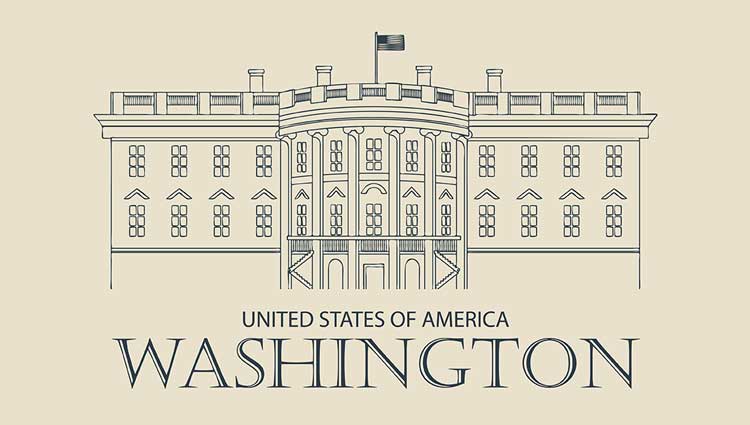Predicting the future of philanthropy is a tricky business—and even more so when it comes to political shifts. Under the new Trump administration, the direction of philanthropy could change, although I do not think it will drastically. We can only take some guesses based on historical data and recent events.
The Good
A good predictor of charitable giving has been the stock market. It’s simple: When stocks do well, philanthropy follows. A second Trump term will likely drive stocks up and therefore charitable contributions will likely rise, too. Financial prosperity has always correlated with increased generosity among Americans, who tend to share more of their wealth when their portfolios “even look” promising. That is, before their portfolios even actually go up.
Another predictor is taxes. Trump has long supported tax reductions, which means people may have more disposable income. Historically, when people experience reduced tax burdens, their capacity (and willingness) to give increases. Even businesses are more likely to give raises, which then passes to philanthropy. The combination of stock market growth and a lower tax environment could lead to a boom in donations, particularly from high-income households.
In short, the financial landscape might become a positive factor for philanthropy like in the past, with increased donations to many nonprofits—especially those focused on health, community services, and the arts.
The Bad
On the flip side, there are some warning signs. J.D. Vance (Trump’s running mate) could have a negative effect on large-scale philanthropy, particularly for university endowments and larger, powerful foundations. Vance has been outspoken about his belief that many large philanthropic organizations—such as the Ford Foundation, Gates Foundation, and even university endowments—are harmful to American society. Of course, he has a habit of changing his tune (like any other politician) to suit the audience, so these are just guesses. Also, I don’t think philanthropy is high up on Vance’s agenda.
However, as cited in Forbes, Vance has criticized these organizations for promoting “left-leaning ideologies” and has proposed measures on taxation. He once stated that “the Ford Foundation, the Gates Foundation, the Harvard University endowment, these are fundamentally cancers on American society but they pretend to be charities so they benefit from preferential tax treatment.”
His rhetoric (and this rhetoric has been around for several decades, and shared by many on the left and right), if translated into policy, could make the environment more hostile for the larger nonprofits, particularly those in education.
In fact, we are already seeing some impact on charitable giving to higher eds. According to Forbes, donations to institutions like Harvard have dropped by as much as 15% in recent months. A more adversarial political climate could further discourage some donors from supporting institutions that face negative public scrutiny of any kind or potential tax penalties. It remains to be seen how this aspect of philanthropy under Trump will play out.
Moreover, the potential for new legislation targeting university endowments or even foundation assets could have profound effects. The College Endowment Accountability Act proposed by Vance in 2023 aimed to significantly raise taxes on endowment incomes, though it was blocked by Senate Democrats. However, if Trump and Vance gain more power, similar legislation could gain traction, posing a challenge to the financial stability of large educational and philanthropic institutions.
Even large faith-based endowments will be on watch, like the Mormon Church, which has an endowment almost twice the size of Harvard’s. But remember: Almost all government legislation involves negotiation, so these impacts will not be as large or “detrimental” as the media may portray. In short, don’t worry too, much regardless of which side of the aisle you are on.
The Toss-Up (The Tough to Predict)
Of course, there are always wild cards. The philanthropy landscape involves a web of economic conditions, policy decisions, and individual motivations. While it’s likely that the market and tax changes will create favorable conditions for giving, the question remains: How will donors react to increased scrutiny of foundations and university endowments?
The tone and content of public discourse can significantly impact charitable behavior. If Vance and his colleagues continue to promote some rhetoric towards some nonprofits, donors might think twice before making large contributions to targeted institutions. Alternatively, the pressure could push foundations and endowments to adopt more transparency and to focus more on core missions, potentially leading to increased credibility and renewed public trust.
Another unpredictable factor of philanthropy under Trump is how grassroots philanthropy and smaller nonprofits will fare. Historically, times of political upheaval often led to increases in grassroots efforts and localized charitable giving. People may divert their contributions from larger institutions to smaller organizations they feel are more aligned with their values or less likely to be affected by political pressures.
Final Thoughts
Philanthropy under Trump and his new administration is a mix of potential upsides and downsides. The likely positives are tied to market performance and tax reductions, both of which could create an environment that encourages giving. However, with J.D. Vance’s documented opinions toward major philanthropic players, we might also see a more restrictive regulatory environment for larger institutions—particularly those in education and progressive causes. Many claim, “It’s been done to businesses. Why not to nonprofits?”
Of course, we cannot fully predict how the landscape will evolve. The interplay of political power, economic conditions, and public sentiment will determine whether philanthropy in the coming years will flourish or face challenges. For donors, nonprofits, and those who benefit from charitable efforts, it will be important to stay adaptable and resilient in the face of change. But one thing is for sure: There’s never been a better time for planned giving.
My important take away? Don’t panic. That’s what the majority does. No one ever became wealthy by panicking.







[…] next four years will pass, no matter what. Stop thinking about who the next president will be. The question is, will you grow, or will you coast? Will you lead, or will you […]